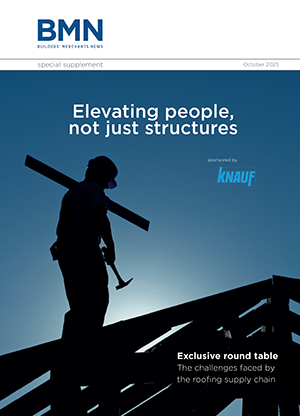Alex Dalton, managing director of Daltons Wadkin, takes a look at the offsite construction of homes. Focusing specifically on timber, he discusses the importance and benefits of using timber in construction.
Off-site construction of homes, also known as modular, has been around since the 1950s with pre-fab houses popping up all over the country in post war construction. Today, there is a resurgence with the method of building said to grow in 2017.
This construction method can be a huge asset to the housebuilding industry, where there is pressure to deliver high quality, good value housing quickly. It may sound unorthodox but off-site construction is believed to have many benefits over traditional housebuilding. It reduces wastage, streamlines the supply chain, lessens the reliance on traditional skills and provides swifter completion time, as work under factory conditions is not hampered by variables like bad weather.
As well as the off-site construction of homes, another important trend is for the UK construction trade to operate more sustainably. ‘Sustainability’ refers to activities that don’t deplete non-renewable resources or harm the environment. That is why building with wood, most notably timber, is on the rise.
It provides great benefits when combined with clever planning, high precision and well-monitored construction and high quality implementation. The use of timber frames around the world is very popular. There is no difference when we come to using timber in off-site construction of homes.
Timber frame homes are often thought of as a lightweight form of construction, but don’t be misled. It is a custom-made structure that is remarkably strong and durable. There are many advantages to timber frame construction, but its best-known quality is its environmental excellence.
When using timber to build off-site construction of new homes, there is a high degree of flexibility. A timber frame structure can be cladded in any external material usually timber panels, bricks or stone. This is to complement the local regulations and planning requirements. Transportation costs are lower due to the fact that timber is lightweight. The components in a timber frame weigh less and can be used on a brownfield sites or sites with difficult land conditions.
Here are 10 reasons why sustainable timber is the best construction material, and why we should be looking at building off-site contemporary timber houses today:
Natural material
Timber is one of the few natural building materials, which has a lot of advantages. Generally, timber is non-toxic, does not leak chemical vapour into the building and is safe to handle and touch. It also means that as timber ages, it does so naturally.
Ecology and sustainability
People have been building with timber for thousands of years. Timber is ecological and sustainable and a truly renewable building material. Timber is grown quicker than it is used. Most of the main timber supplying countries have long-standing policies to re-grow more timber than is felled. If new trees are planted to replace those harvested, timber will continue to be available. Timber is milled all over the world and is often used close to where it is produced. This promotes local economies and reduces the energy needed to transport materials long distances.
Low in production energy
It takes very little energy to convert the wood in trees to the timber used in building. This means that the embodied energy in timber is low. In fact it is the lowest of almost all common building materials.
A store for carbon
Timber is made from carbon drawn from the atmosphere. This carbon would otherwise be adding to the greenhouse effect. Using timber in buildings stores the carbon for as long as the building stands or the timber is used.
Offers great insulation
Timber is a natural insulator and can help reduce energy needs when it is used in windows, doors and floors. A timber frame allows more space for insulation than a brick building, and wood itself also has naturally thermally insulating properties. Of course, a better insulated home requires less energy to heat and cool, which typically means less fossil fuel use.
Wood also has better insulating properties than steel. Wood's structure contains minute air pockets, which limit its ability to conduct heat and help to minimise the energy needed for heating and cooling our eco timber houses providing very energy efficient homes.
Energy efficient timber houses
Wood helps to minimise energy consumption in several ways. Life cycle of a product studies show that wood and timber frame houses significantly outperform steel and concrete.
Easy to work
Timber is versatile and can be used in a wide variety of ways. Being light, it is easy to install and can be worked with simple equipment. This reduces the energy needed for construction. Different species of tree produce timber of differing colours, textures and functional qualities.
No limits on design and size
Considering the relationship between using the material and the environment is very important when building a home. Using timber as the main building material is the right choice with its endless design possibilities, as well as unrivalled physical and technical properties for a timber frame home.
Quick build time
The speed of the build is quicker with timber. A timber frame can be partly pre-cut, modulated, and built to precision making build time much quicker than for a brick build. Time is also saved since less building debris is around to clear.
Timber-framed buildings are far quicker to erect than brick or stone buildings. A quicker build time clearly saves time and money for both domestic and commercial property owners. Building with timber is also a less specialised and expensive skill.
Durable and easy to maintain
Timber is a highly durable material. Some well-made wooden structures last for centuries. It is also easy and cheap to maintain compared to other materials, especially if you don’t mind it changing colour over time.
Alex Dalton is managing director of Daltons Wadkin.









